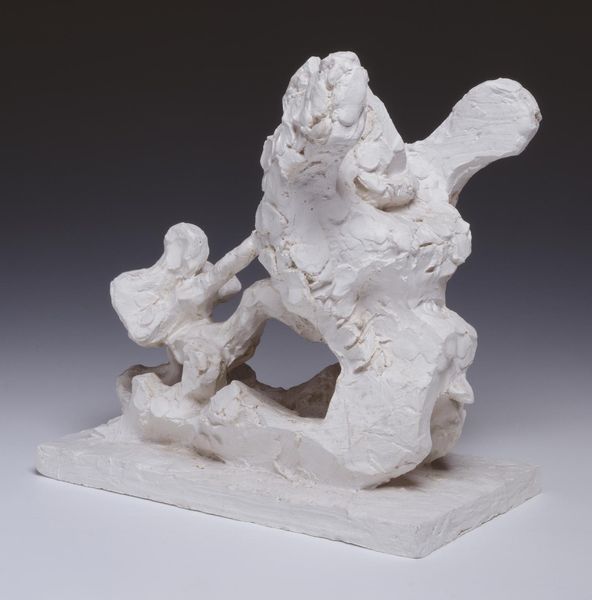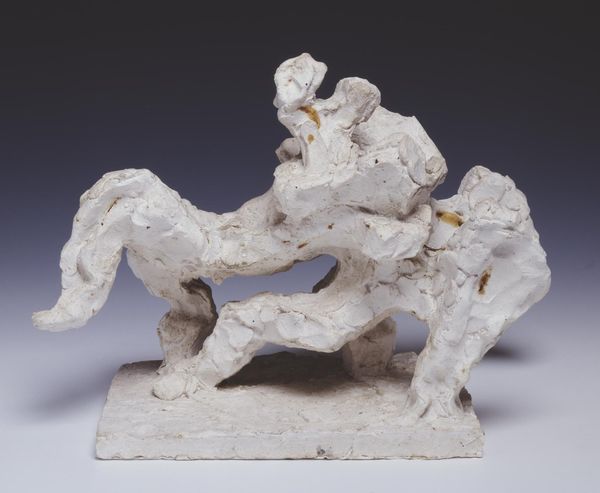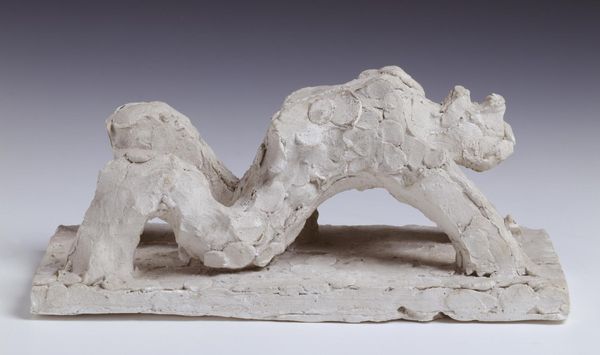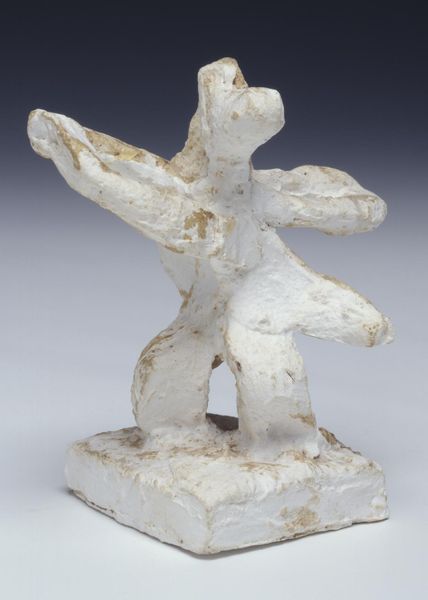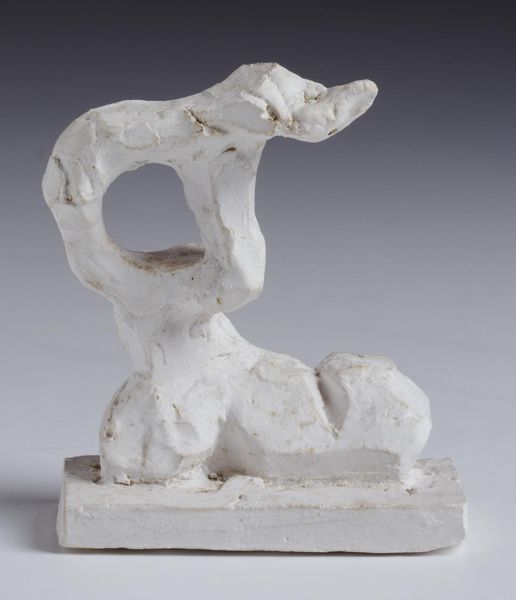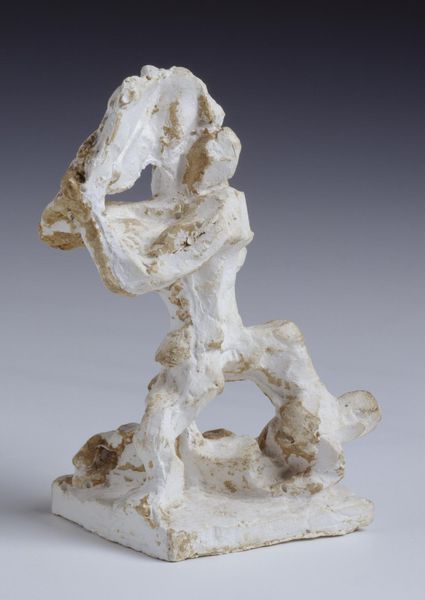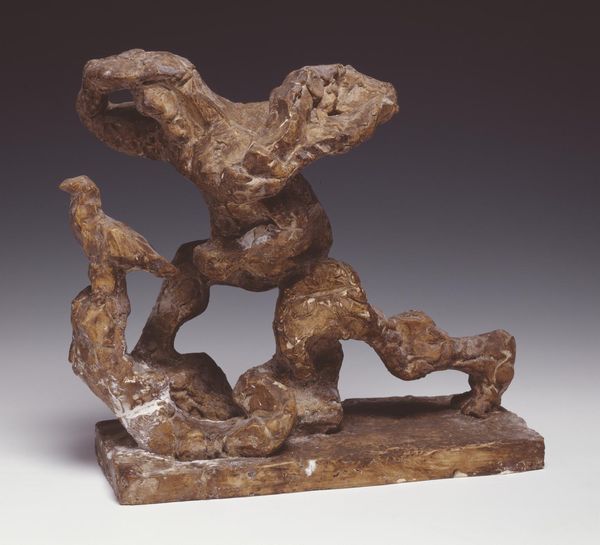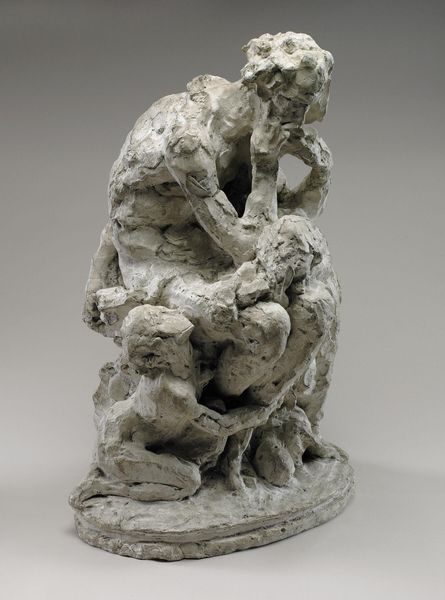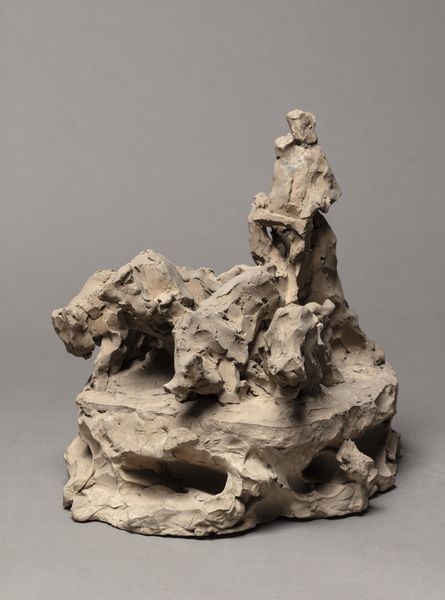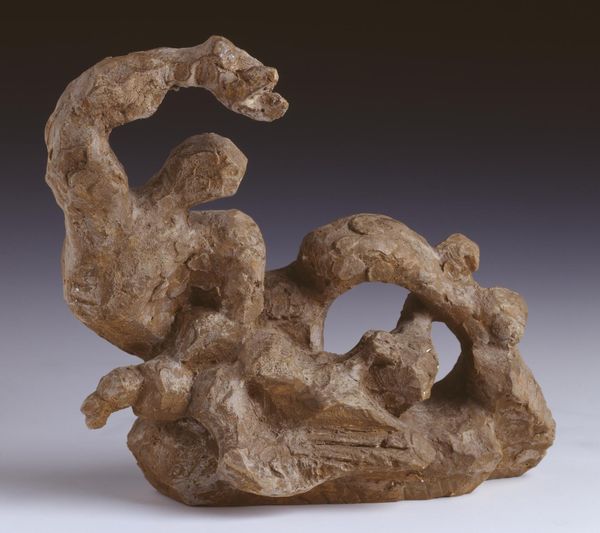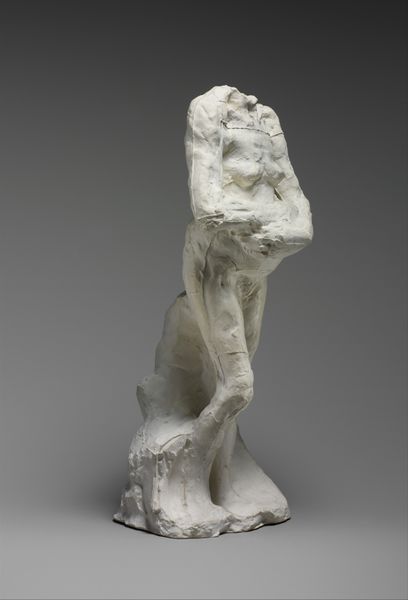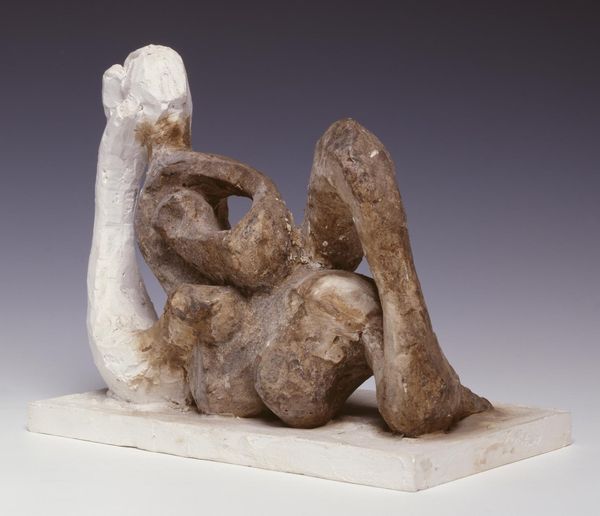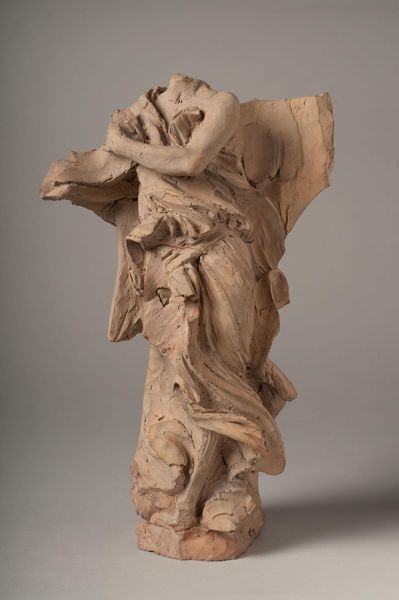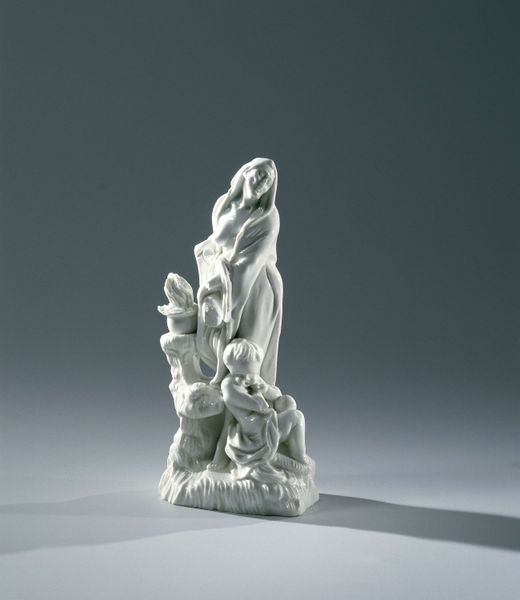
Dimensions: object: 210 x 325 x 150mm
Copyright: © The estate of Jacques Lipchitz, courtesy, Marlborough Gallery, New York | CC-BY-NC-ND 4.0 DEED, Photo: Tate
Curator: Here we have Jacques Lipchitz's "Bull and Condor," held in the Tate Collections. It stands as a dynamic interplay between form and representation. Editor: It feels incredibly visceral. The rough texture of the material gives it a kind of primal energy. What is it made of? Curator: The medium is plaster. It's fascinating how Lipchitz uses such a pliable material to evoke struggle and tension. Editor: Absolutely. Considering the bull and condor's cultural symbolism, the piece feels deeply rooted in labor practices and the artist's consumption of those symbols. It’s a fascinating use of materiality. Curator: Indeed, the interplay of mass and void constructs a compelling visual and thematic dialogue. Editor: Seeing it this way has really reshaped my understanding of Lipchitz's work. Thank you.
Comments
tate 6 months ago
⋮
http://www.tate.org.uk/art/artworks/lipchitz-bull-and-condor-t03513
Join the conversation
Join millions of artists and users on Artera today and experience the ultimate creative platform.
tate 6 months ago
⋮
The poet Juan Larrea told Lipchitz about fiestas in Peru where a condor is bound to a bull so that they fight. Lipchitz said that he heard the story at a time when he was profoundly depressed by the rise of Nazism, and that: 'the bull and the condor, and particularly the human beings who delighted in their struggle, signified the insane brutality of the world.' The rough handling of this maquette embodies the violence of its subject. Although he acknowledged its potential, Lipchitz never made a larger-scale work on this theme. Gallery label, August 2004
